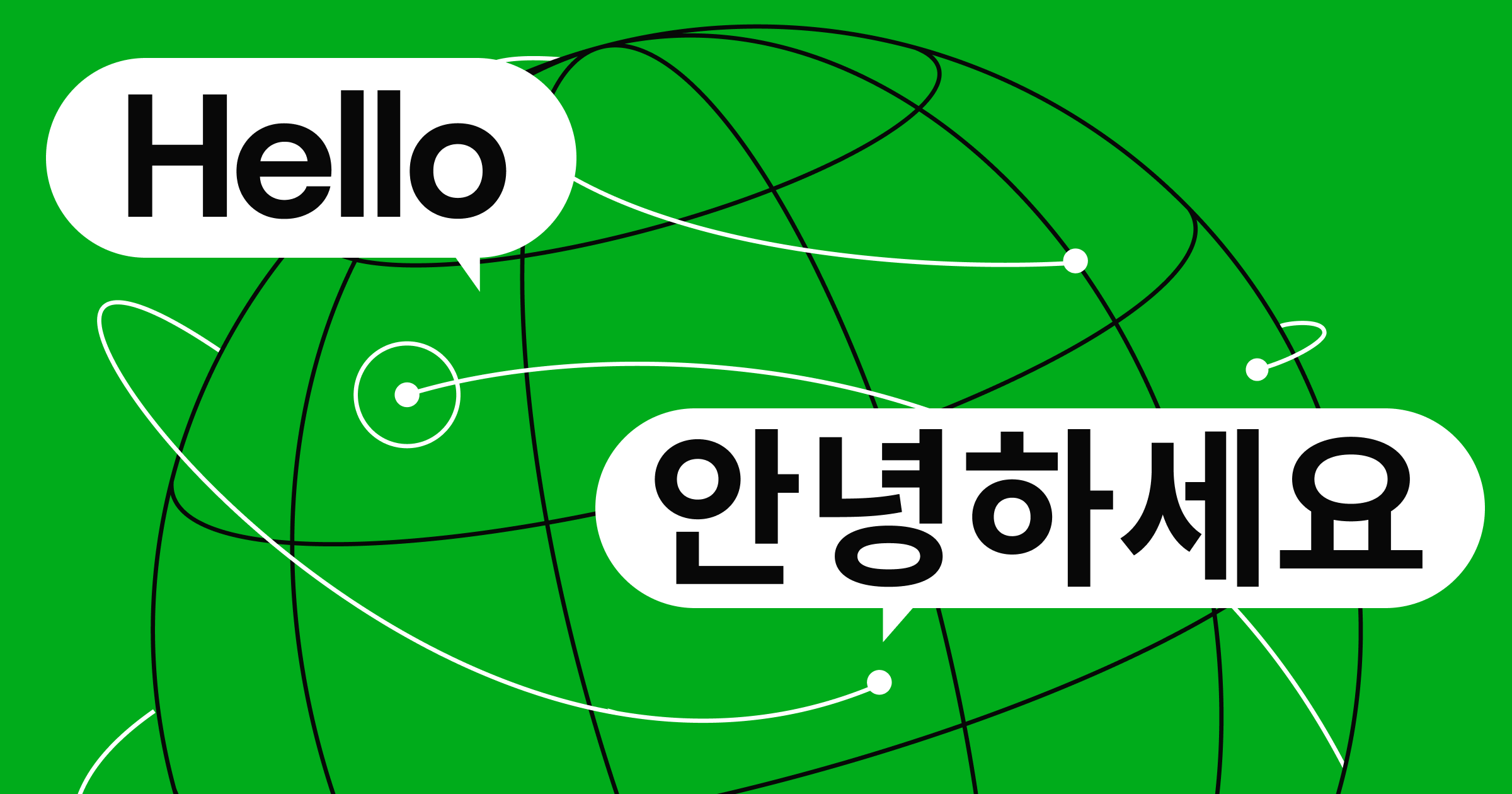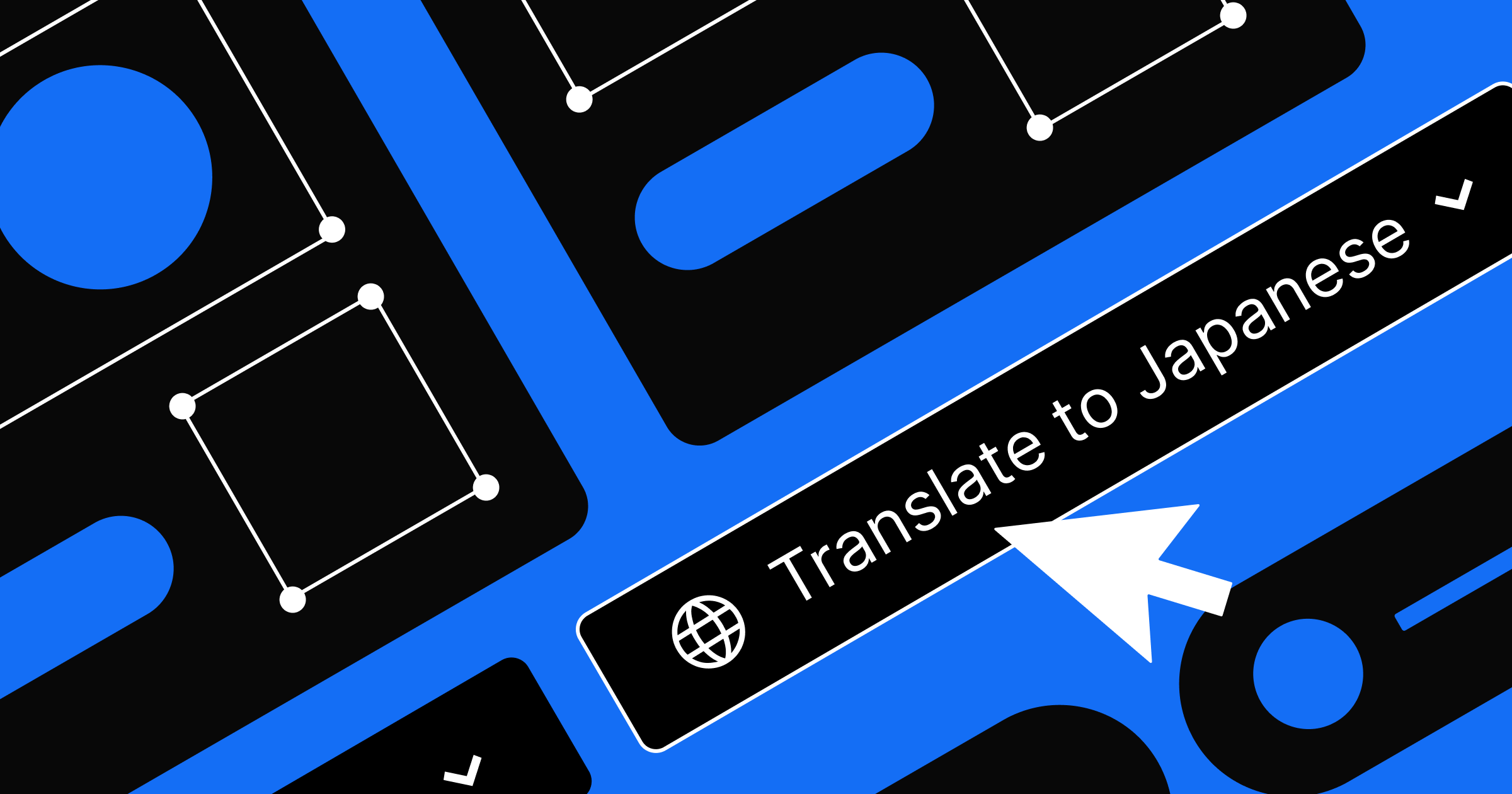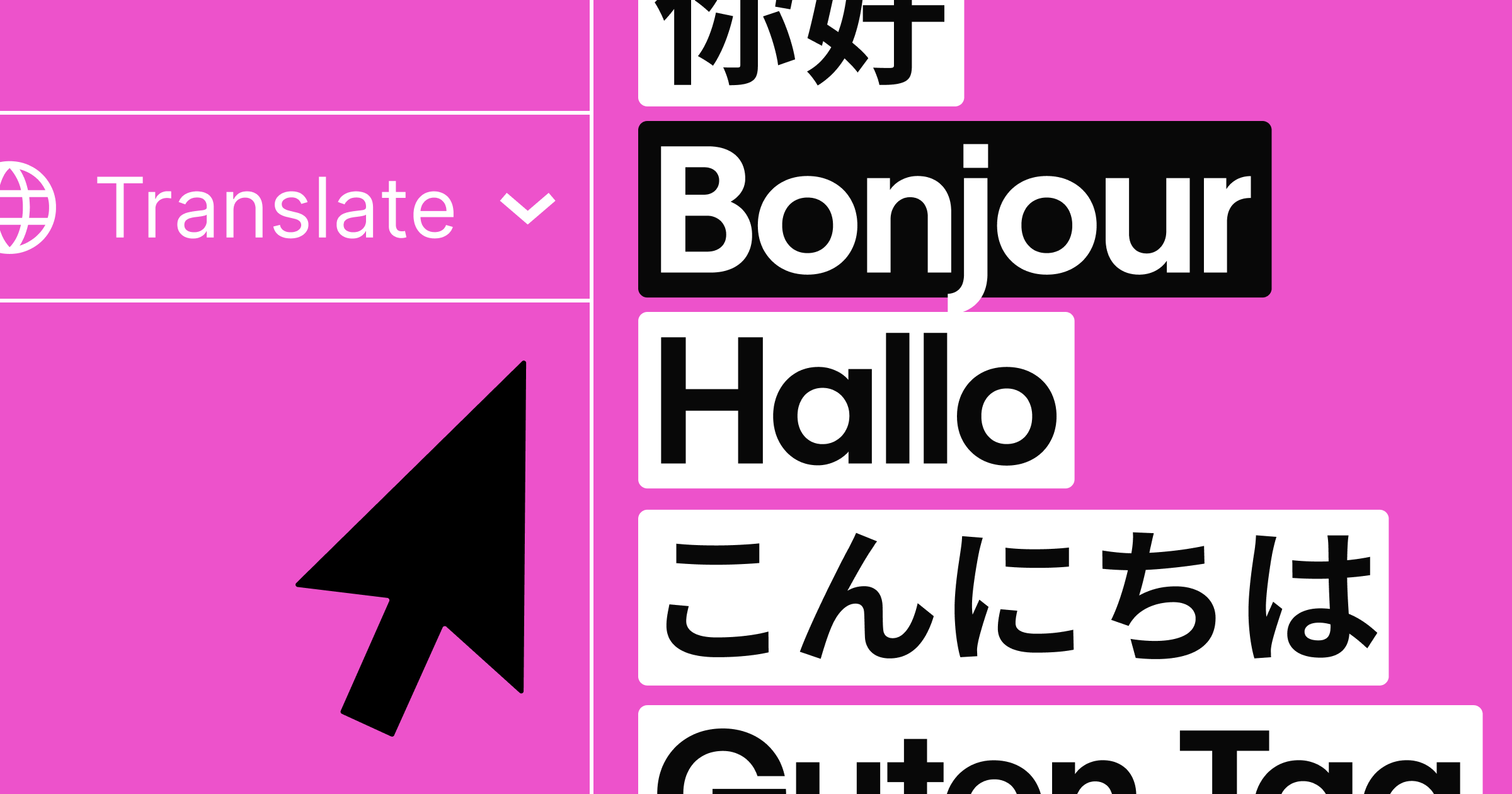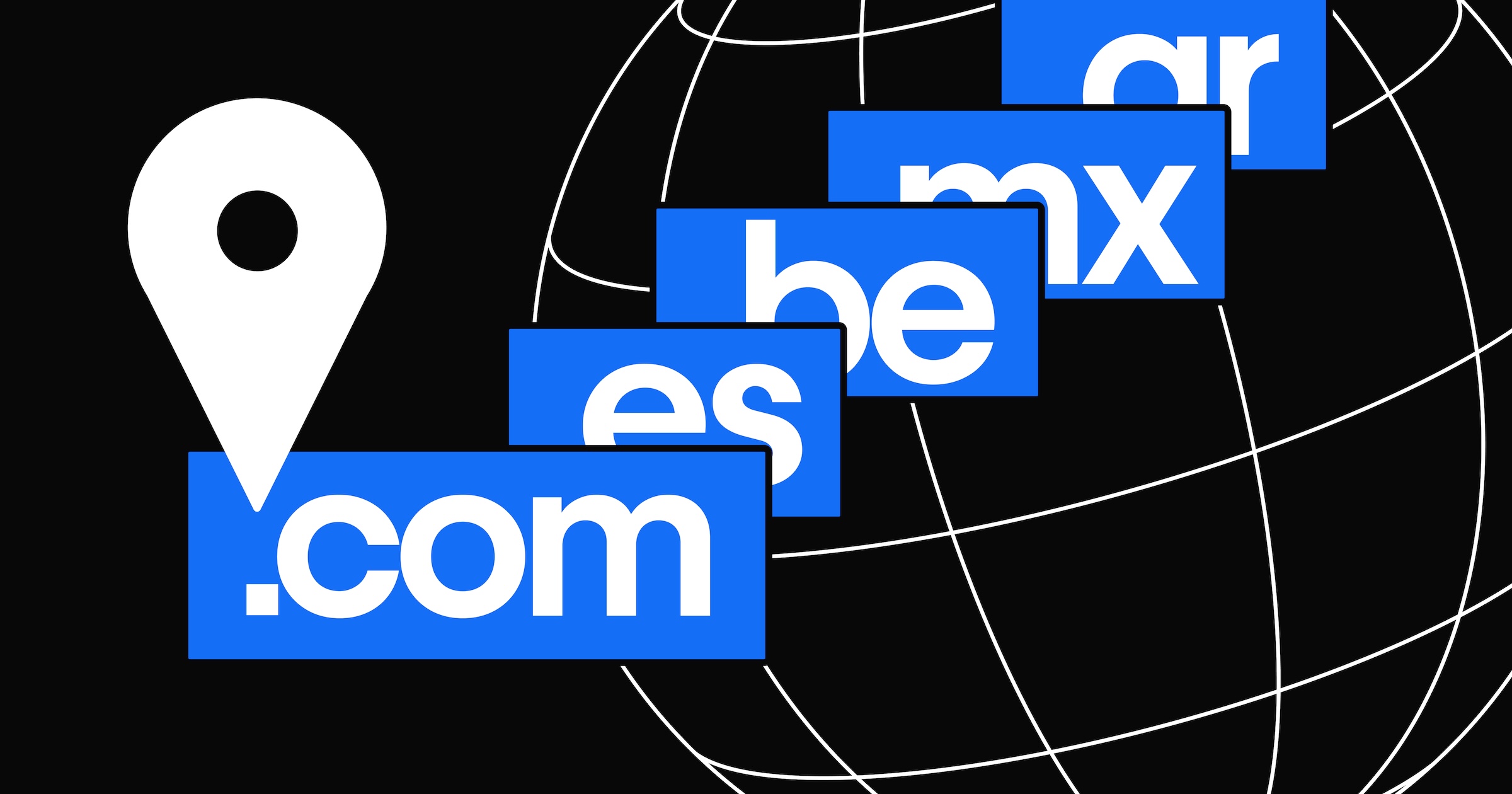Leverage internationalization and localization to keep your expanding customer base engaged around the globe.
As your business enters international markets, it’ll need to meet the unique needs and demands of each locale. Internationalization and localization strategy help you overcome this challenge by tailoring your digital content to resonate with international audiences. Although they both work toward the same goal of global engagement, their roles and processes are distinct and indispensable. Here’s how each strategy helps your brand achieve success on a worldwide scale.
Do I need internationalization?
Internationalization, abbreviated as i18n, involves designing websites and applications to accommodate different languages, cultural differences, and regional standards. It’s an essential process simplifying the subsequent localization process — adapting products to a specific locale.
i18n helps your web presence resonate with worldwide audiences by enabling individuals to interact with your content in their native language. This is not just beneficial for large enterprises engaging with global market segments but also for smaller businesses looking to expand internationally.
However, internationalization is not a quick process — especially if you have to reconfigure your site retroactively and overhaul a legacy system. It demands a comprehensive approach, including:
- Developing a flexible site architecture that supports variable content, which you can replace with language-specific data as needed.
- Employing multilingual search engine optimization (SEO) tactics to prevent search engines from flagging content in different languages as duplicates.
- Using URL structures that differentiate between language versions, aiding user navigation and search indexing.
- Engaging with legal teams and other compliance professionals to appropriately translate all legal text and disclaimers and ensure adherence to local regulations.
- Choosing a content management system (CMS), like Webflow, that’s capable of handling and streamlining content across multiple language versions. Webflow supports LTR (left-to-right) as well as RTL (right-to-left) script on published sites for Arabic, Persian, and Hebrew locales, as well as regional dialect locales of these languages.
Internationalization helps businesses meet the diverse needs of international users, expand their market reach, and demonstrate cultural sensitivity. Here are some additional benefits:
- Provides global reach. Implementing i18n helps you strategically penetrate international markets and grow your digital footprint without requiring extensive redesigns for different regions. It’s particularly vital for businesses that are targeting emerging markets, where adapting to local languages and cultures is key to capturing new customer segments.
- Increases scalability. As businesses evolve, maintaining multiple region-specific platforms becomes increasingly complex. i18n addresses this by creating a singular, adaptable framework that supports various languages, reducing the resources required for global scalability.
- Ensures consistent branding. When branding elements like logos, color schemes, and messaging are uniform, even across countries and markets, they become more recognizable and foster familiarity. This consistency helps customers identify your brand quickly, which cultivates trust, reliability, and brand loyalty.
- Reduces maintenance costs. A single, adaptable website architecture streamlines updates and eliminates the need to maintain multiple site versions, producing significant cost savings.
- Enables localization. i18n lays the foundation for localization — tailoring content to specific locales. While internationalization standardizes the core structure of websites and apps for global use, localization refines it to resonate with local audiences, allowing for more nuanced cultural alignment.



















Unlock worldwide scale
Learn how Webflow Localization can help you customize your site for a global audience and drive business growth in this free webinar.
What’s localization?
Localization, or l10n, refines internationalization by adapting your digital content, visuals, and product information to suit specific regional markets. For example, you might customize product offerings and brand messaging according to local weather patterns, ensuring customers in snowy Minnesota receive promotions for winter gear while those in warmer Australia see ads for summer apparel. This practice enhances your content’s relevancy and provides more immersive, personalized customer experiences.
The key benefits of localization include:
- Enhanced cultural relevance. Localization goes beyond translation — it customizes your content to resonate with the cultural context of each audience. By considering local customs, imagery, language idioms, and cultural connotations, localized content forges stronger audience bonds, improving your brand’s relevance and connection within a particular regional market.
- Improved user engagement. A localized user experience adapts to the audience’s cultural and functional expectations, including date formats, currencies, and user interface layouts. Sites that align with local practices are better at grabbing the attention of new customers, and lead to more meaningful user interactions. In fact, localized online content has a 12x better engagement rate compared to other content. Data also shows people spend twice as long on localized sites compared to websites in a single language.
- Increased conversion rates. When users encounter content tailored to their local context, they’re more likely to respond positively. Localized content increases the relevance and appeal of calls to action (CTAs), leading to improved click-through rates and higher chances of conversions. Given the choice between two similar products, 76% of consumers will buy the one with product information in their spoken language. The number jumps to 89% for consumers with no English-language competence.
- Improved customer loyalty: Website localization creates stickier customer relationships. In fact, 75% of customers are more likely to purchase products from the same brand again if customer care is in their language.
- Compliance with legal requirements. Different regions have their own regulations and legal standards, particularly regarding data privacy, consumer rights, and marketing. For example, California has the California Consumer Privacy Act (CCPA), which focuses on data privacy, while the European Union has the General Data Protection Regulation (GDPR). By adapting content and practices to align with each region’s regulations, localization ensures compliance.
Internationalization vs. localization: Examples
Internationalization and localization take different approaches to prepare your digital platform to cater to global audiences. Here’s a breakdown of how implementation differs between i18n versus l10n, using a sportswear website as an example.
Internationalization example
Let’s say you want to prepare your sportswear site to serve both English and Japanese-speaking audiences. The internationalization process might begin with creating a flexible site structure, or primary site, that’s adaptable to different languages. Instead of hardcoding text, you’ll use placeholders. For example, for the welcome message, the primary site has a placeholder that reads something like “{{welcome_message}}”.
In the English version of your site, you’ll replace “{{welcome_message}}” with “Welcome!” In the Japanese version, it’ll become “いらっしゃいませ!” This method lets you switch out phrases, greetings, and other content without altering the site’s core codebase or functionality.
With internationalization, your primary site acts as a foundation. Since it doesn’t have any language-specific content, it can support a diverse range of languages and cultural formats. It’s like a blueprint that lets you dynamically add elements like date formats, currencies, and textual content according to your users’ locale.
Localization example
Internationalization makes your website multilingual, but localization tailors your website to fit a region’s cultural context and user expectations. This isn’t just about language — it’s about nuance and relevance. Here are some examples of customizations you might implement through localization.
- Currency and payment methods. In addition to translating prices into yen, your site would also integrate with local Japanese payment systems, such as LINE Pay, and include a cash-on-delivery option to reflect the country’s preference for cash transactions.
- Images and product descriptions. To ensure maximum resonance with your audience, images on your localized Japanese site might depict models that align with regional beauty standards engaging in popular local sports. Descriptions also go beyond literal translations and emphasize features that speak directly to Japanese consumer preferences. For example, if your sportswear offers UV protection, you might emphasize this feature to appeal to the Japanese priority on skin protection.
- Sizing and fit. Localizing sizing charts involves more than translating measurements — it’s about recalibrating them to correspond with local body types and fitting preferences. This might include providing detailed guidance on measuring oneself according to Japanese standards to ensure that customers feel confident that what they order will fit as expected. This customization fosters a sense of reliability and trust in your brand.
The common goal: Globalization
Globalization, or g11n, integrates internationalization (i18n) and localization (l10n) efforts to create an inclusive and adaptable online presence. Ultimately, the goal is to transcend geographical and cultural boundaries by providing cohesive and authentic experiences that connect people to your digital content, wherever they may be.
Internationalization lays the groundwork by structuring your site’s architecture to support varied languages. This foundational step ensures your website is language-independent and crafted with a global template in mind, enabling seamless transitions between different linguistic and cultural environments.
Localization then tailors this framework to the specifics of your target market by refining the content and user experience to reflect local languages, cultural norms, and user expectations. This process shapes your website into a culturally attuned platform that speaks directly to each segment of the global audience.
Together, these efforts enable globalization — adapting locale-specific components, websites, and digital platforms for different cultures and new markets. It’s not just about making content available in a specific language — it’s about making it appropriate, resonant, and efficient for a diverse international audience. This approach ensures that your content is contextually relevant, legally compliant, and fully functional for users from around the globe.
Grow your global reach with Webflow
Set your sights on the world stage with Webflow Enterprise, a powerful visual web development platform that caters to your globalization needs. Webflow offers an innovative solution that integrates the localization process and enables teams to create and develop websites and landing pages catering to diverse languages and regions.
With Webflow’s native localization solution, the complexities of multilingual content are a thing of the past. Webflow Localization unlocks full customization of your website — from design to translation to SEO. It’s not just about expanding your website — it’s about creating a personalized, immersive experience that transcends borders.

Customize your site for visitors around the world
From design to translation to best-in-class SEO, Webflow Localization is an end-to-end solution for customizing your site for a worldwide audience.































